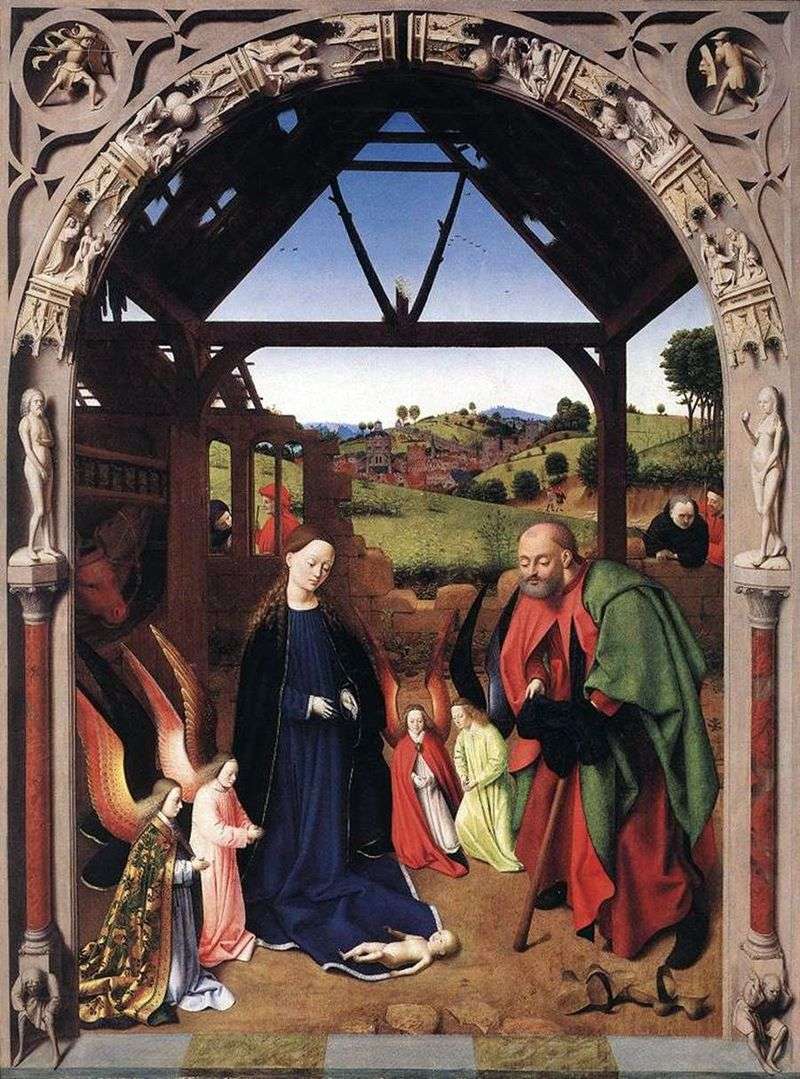
Petrus Christus divides the composition into three planes. The first depicts an arch with scenes from Genesis. On the pillars Adam and Eve bite off the fruit of the tree of knowledge. In the archivolt – the expulsion from paradise, the works of Adam and Eve
And the murder of Abel. In the last scene, the elderly Adam and Eve are escorting one of their sons to the way. This means either the expulsion of Cain to the land of Nod, or the story of their third son, Seth. According to the apocryphal Gospel of Nicodemus, written around the fifth century, Seth went to heaven behind the branch of the tree of knowledge to heal the aging Adam. After the death of his father, he planted a branch on his grave, and a millennium later a tree grew there: a cross was made of him, on which Christ was crucified. This story is also given in the Golden Legend, the most famous collection of Christian legends compiled in the 13th century in the Middle Ages. If the last relief is really dedicated to Sifu, the image opposite Exile from paradise hints at the impending salvation.
The scene of Christmas itself takes the middle plan. It is important to pay attention to two seemingly unnoticeable details: the shoes lying next to Joseph, and the bough sticking out of the beam with fresh leaves. They refer to two Old Testament subjects, in which in the Middle Ages they saw instructions on the Immaculate Conception and Christmas. First, it is the story of the rod of Aaron, the high priest, who flourished as proof of his right to serve God, and of the burning bush – the enveloped flame, but not the burning bush from which God spoke to Moses. The rod, miraculously let off shoots, and the bush unspoiled by fire anticipated the virgin birth. The location of the branch directly over the baby pushed the viewer to reflect on its meaning and recalled the shoots that Aaron’s staff gave. This is also hinted by the consonance of two Latin words: virgo and virga.
Joseph’s shoes remind the viewer of Moses, who took off his shoes when he came to the bush. In the popular illustrated Christmas Bibles, Aaron’s and Moses’s wand in front of a burning bush was often depicted side by side. The symbolism of Christus is somewhat more complicated: most likely, he counts on an educated and devout viewer.
The far plan is dedicated to the future – the death and resurrection of Christ. For the barn, the city of Bruges is visible, among the buildings is a Jerusalem church, built in Bruges in 1428. There were a lot of such churches in Europe, their plan and dedication reminded of the Holy Sepulcher in Jerusalem. The image of the tomb Christus completes his narrative.
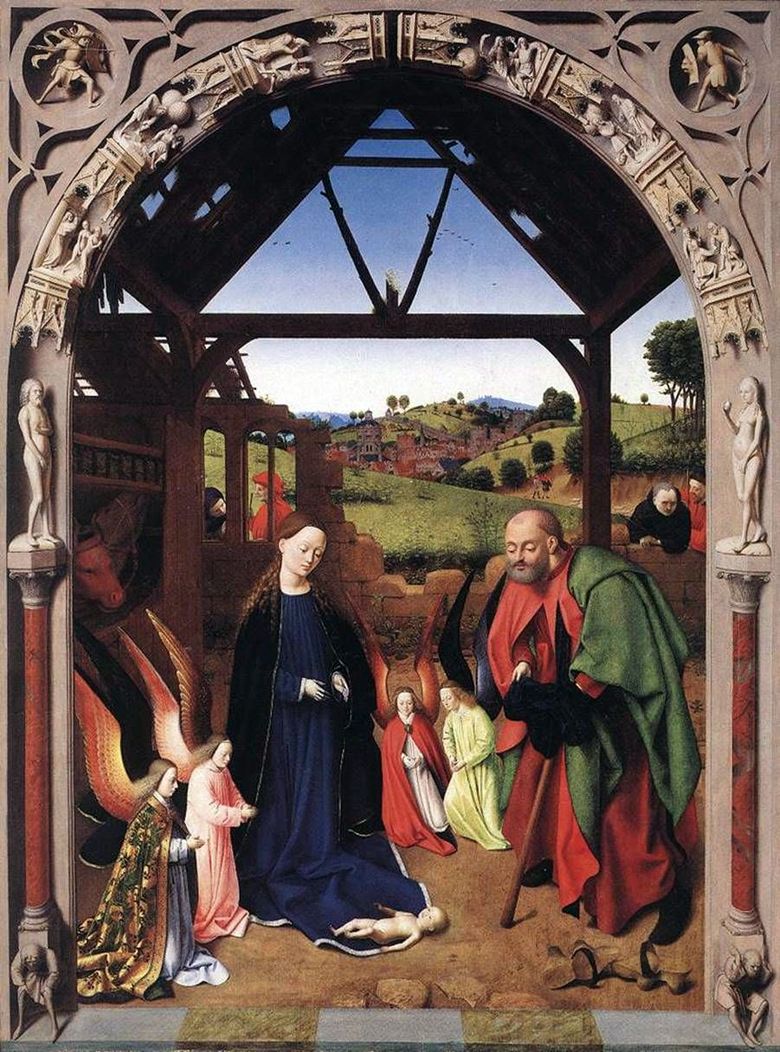 Noël – Petrus Christus
Noël – Petrus Christus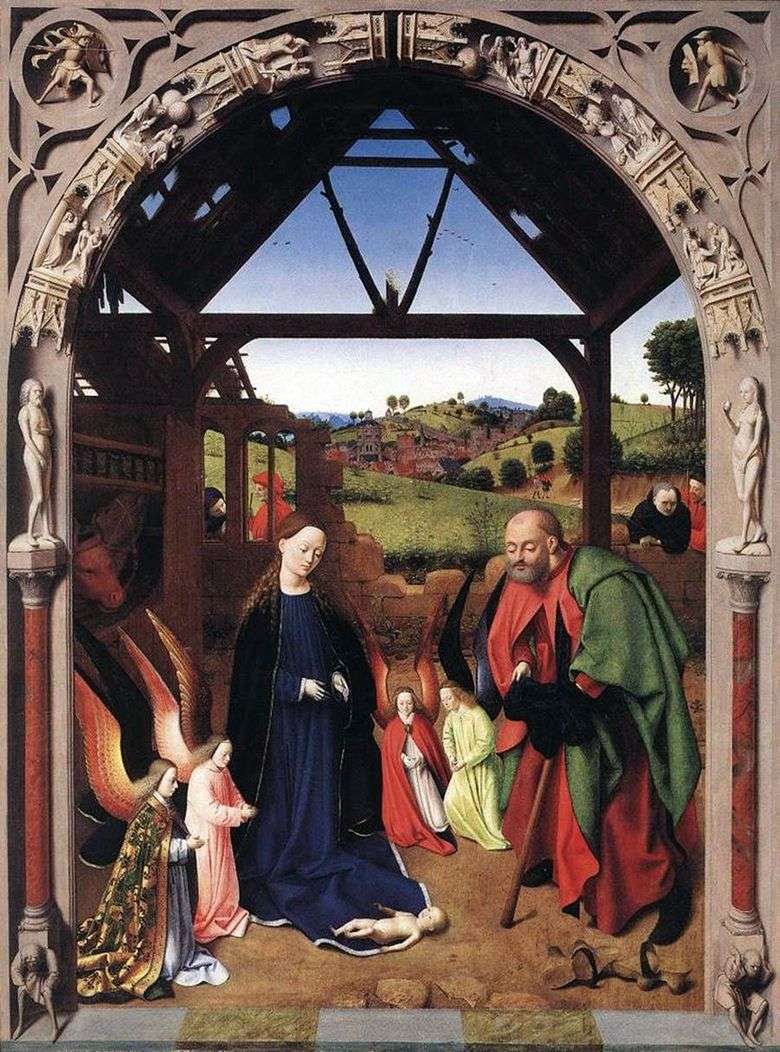 Navidad – Petrus Christus
Navidad – Petrus Christus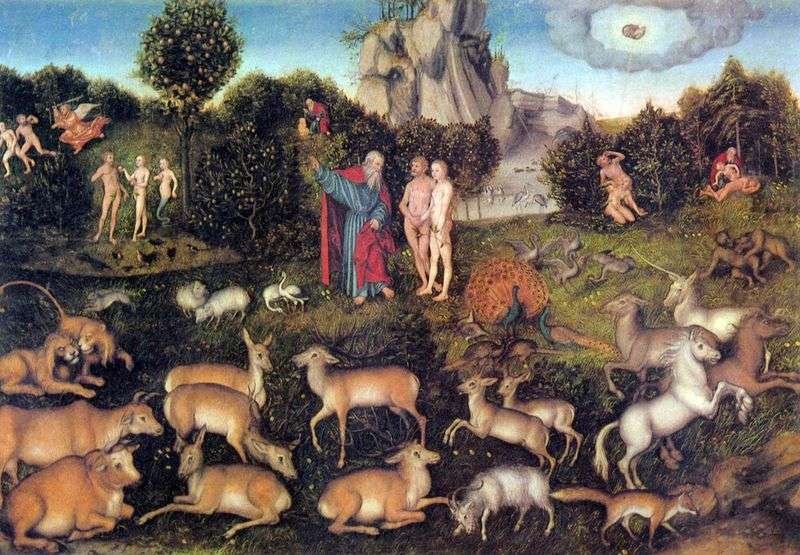 Paradise by Lucas Cranach
Paradise by Lucas Cranach Our Lady Before Christmas and Merry Christmas Virgo, with saints in the fields
Our Lady Before Christmas and Merry Christmas Virgo, with saints in the fields Shestodnev
Shestodnev The Fall by Hugo van der Gus
The Fall by Hugo van der Gus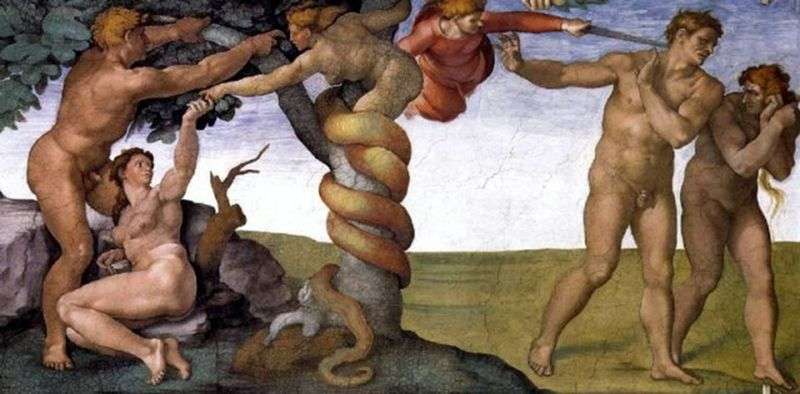 The Fall and Exile from Paradise by Michelangelo Buonarroti
The Fall and Exile from Paradise by Michelangelo Buonarroti Spring. Seasons (New Primitive) by Mikhail Larionov
Spring. Seasons (New Primitive) by Mikhail Larionov